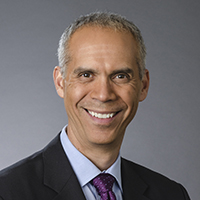By Leah R. Singer
 When one thinks of health care, what typically comes to mind are the doctors and nurses that work directly with patients to provide medical explanations, cures for diseases, and prescriptions for healthy living. What is often not considered, however, are the countless individuals and systems at work behind the scenes that play a vital role in patient care. In today’s constantly changing world of medicine, the role of Healthcare Information Technology (HIT) is more critical to patient care than ever before.
When one thinks of health care, what typically comes to mind are the doctors and nurses that work directly with patients to provide medical explanations, cures for diseases, and prescriptions for healthy living. What is often not considered, however, are the countless individuals and systems at work behind the scenes that play a vital role in patient care. In today’s constantly changing world of medicine, the role of Healthcare Information Technology (HIT) is more critical to patient care than ever before.
HIT is the development, implementation, optimization and management of electronic health records, and how that information is disseminated across the multitude of platforms and people that support patient care. It is a field that becomes more complex every day. One of the key challenges HIT employers and professionals face is assuring an individual’s skillset stays current with or even ahead of evolving technology.
Chris Pryor, Director of Patient Care Systems for Sharp HealthCare, has been working in the field of HIT for more than a decade and has helped his healthcare organization create a culture to support information technology. Just like doctors, the work Pryor and his team do in IT affects patients’ lives.
“Our role [in HIT] is to provide accurate data and information to the practitioners who are providing direct care to the patient,” said Pryor. “It is a privilege to come to work every day knowing our efforts are making a difference and improving the health of the community we serve.”

Chris Pryor, Director of Patient Care Systems for Sharp HealthCare; Advisor and Instructor for UC San Diego Extension's Healthcare IT Certificate
Pryor has been instrumental in assisting UC San Diego Extension develop its Healthcare Information Technology Certificate. The program gives students the strong technical training and interpersonal skill development that employers say is critical for success in the field. Upon completion of the program, graduates qualify for new healthcare-related industry positions, created in large part by the current national initiative to implement and use electronic health records. The Certificate Program also provides a strong competitive advantage to students by providing a solid foundation in the healthcare environment. Unless a job candidate has direct healthcare experience, it can hard to break into the field; the forty hours dedicated to the healthcare industry and care delivery helps overcome some of that.
Employees in HIT are working in all realms of healthcare. Health systems, including Sharp HealthCare and UC San Diego Health System, have large departments dedicated to HIT. However the skillsets are also critical to other organizations, including those that manufacture and sell medical devices.
"The Healthcare IT Certificate Program is a critical way for people to gain experience and education about healthcare,” said Pryor. “This is especially true for job candidates changing industries and entering healthcare for the first time. It's also a conduit for individuals already working in healthcare IT who are seeking a broader perspective from what they encounter at their job each day.”
Pryor sees on a daily basis how important this certificate program is when it comes to educating individuals in HIT. “Medicine evolves so the technology that supports medicine needs to evolve with it,” said Pryor. “Today we are working in a world of population health, patient portals, and data security. Tomorrow the field will be completely different.”
For more information about UC San Diego Extension’s Healthcare Information Technology certificate program, please visit http://extension.ucsd.edu/healthcare.